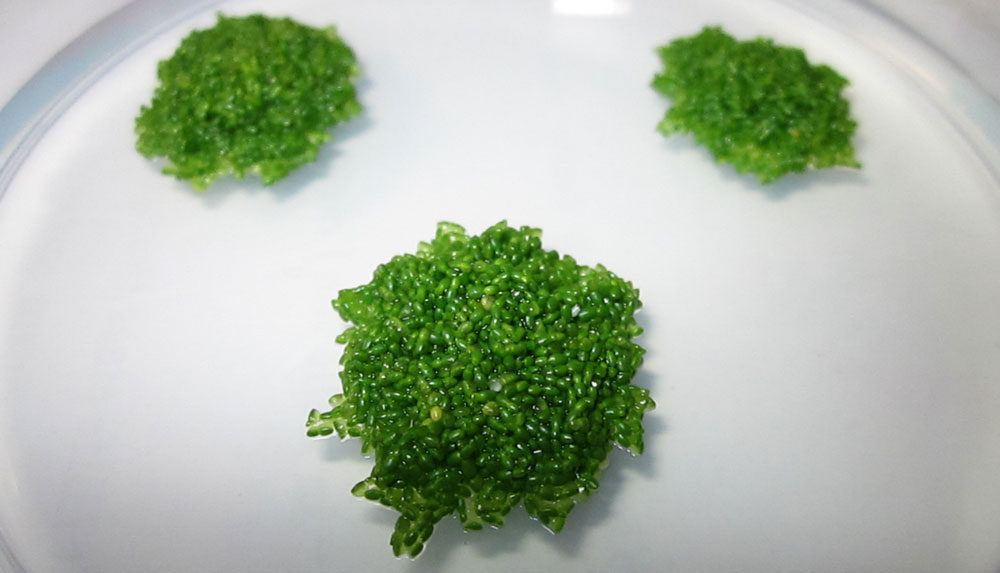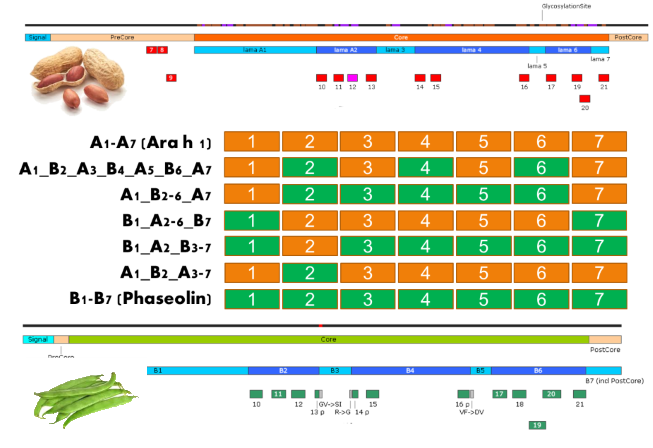Dr. Thomas Reinard, Eva-Maria Plönnigs, Yahui Huang, Shannon McCallan, Michael Werner
Leibniz University Hannover, Institut für Pflanzengenetik Abt. II, AG Molekulare Biochemie
The group of Dr. Reinard produces the allergens Ara h 1 (peanut) and Bra j 1 (mustard) in the duckweed Wolffia australiana. Bra j 1 cannot be expressed in E. coli and Ara h 1 can only be expressed as a partial protein without glycosylation (the so-called core protein) in E. coli.
The Duckweed Wolffia australiana as Bioreactor
The duckweed Wolffia australiana, is – despite its reduced habit – not only the smallest flowering plant in the world, but also a particularly highly developed flowering plant. It is a low demanding plant and can reproduce vegetatively extremely quickly (at a doubling rate of approx. 40 hours). Another advantage of this plant, which has also been genome- and transcriptome-sequenced by our group, is its ability to produce a high amount of protein-rich biomass in a very small space, both in liquid culture (submerged and at the water surface) and on agar plates.

Epitope Mapping using Ara h 1-based Mosaic Proteins
Bioinformatic analyses revealed some inconsistencies in the epitope mapping of Ara h 1 carried out in the 1990’s. This may be due to the fact that these experiments were carried out using small peptides only, which, although they represent the linear epitopes of food allergens quite well, disregard their structural context in the protein.
Therefore, we have designed a modular cloning system (LAMA) based on the Golden Gate cloning, or MoClo system, respectively. LAMA allows the fast and efficient exchange of a single epitope or a group of consecutive epitopes: the regions of the allergenic peanut are replaced by the corresponding regions of the homolog Phaseolin from the non-allergenic garden bean. The resulting mosaic proteins can subsequently be tested with patient sera for reduced allergenicity, in respect to their structural protein conformation. For this purpose, LAMA will be combined with the replicon-based Wolffia bioreactor described above, which allows the production of glycosylated full-length proteins.

LAMA can be considered a blueprint for significantly more reliable epitope mapping strategies for any other food allergen.